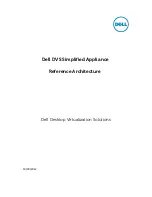
Determining the ESRP Master
ExtremeWare XOS 11.1 Concepts Guide
333
Pre-Master Switch Behavior
A pre-master switch is ready to transition to master, but is going through possible loop detection prior
to changing to the master state. Upon entering the pre-master state, the switch sends ESRP packets to
other switches on that same VLAN. If the switch finds itself superior to its neighbor, and successfully
executes loop detection techniques, the switch transitions to master. This temporary state avoids the
possibility of having simultaneous masters.
Slave Switch Behavior
If a switch is in slave mode, it exchanges ESRP packets with other switches on that same VLAN. When
a switch is in slave mode, it does not perform Layer 3 routing or Layer 2 switching services for the
VLAN. From a Layer 3 routing protocol perspective (for example, RIP or OSPF), when in slave mode
for the VLAN, the switch marks the router interface associated with that VLAN as down. From a Layer
2 switching perspective, no forwarding occurs between the member ports of the VLAN; this prevents
loops and maintains redundancy.
If you configure the switch to use the optional ESRP HA configuration, the switch continues Layer 2
forwarding to the master. For more information, see
“ESRP Host Attach” on page 342
.
Neutral Switch Behavior
The neutral state is the initial state entered into by the switch. In a neutral state, the switch waits for
ESRP to initialize and run. A neutral switch does not participate in ESRP elections. If the switch leaves
the neutral state, it enters the slave state.
Electing the Master Switch
A new master can be elected in one of the following ways:
●
A communicated parameter change
●
Loss of communication between master and slave(s)
If a parameter determines the master changes (for example, link loss or priority change), the election of
the new master typically occurs within one second. A parameter change triggers a handshake between
the routers. As long as both routers agree upon the state transition, new master election is immediate.
If a switch in slave mode loses its connection with the master, a new election (using the same
precedence order indicated
on page 332
or using a configured precedence order described in
“ESRP
Election Algorithms” on page 334
) occurs. The new election typically takes place in three times the
defined timer cycle (8 seconds by default).
Before the switch transitions to the master state, it enters a temporary pre-master state. While in the pre-
master state, the switch sends ESRP PDUs until the pre-master state timeout expires. Depending upon
the election algorithm, the switch may then enter the master or slave state. Traffic is unaffected by the
pre-master state because the master continues to operate normally. The pre-master state avoids the
possibility of having simultaneous masters.
You can configure the pre-master state timeout using the following command:
configure esrp <esrpDomain> timer premaster <seconds>
Содержание ExtremeWare XOS 11.1
Страница 16: ...Contents ExtremeWare XOS 11 1 Concepts Guide 16...
Страница 20: ...Preface ExtremeWare XOS 11 1 Concepts Guide 20...
Страница 21: ...1 Using ExtremeWare XOS...
Страница 22: ......
Страница 78: ...Managing the ExtremeWare XOS Software ExtremeWare XOS 11 1 Concepts Guide 78...
Страница 168: ...Virtual LANs ExtremeWare XOS 11 1 Concepts Guide 168...
Страница 200: ...Policies and ACLs ExtremeWare XOS 11 1 Concepts Guide 200...
Страница 252: ...Security ExtremeWare XOS 11 1 Concepts Guide 252...
Страница 265: ...2 Using Switching and Routing Protocols...
Страница 266: ......
Страница 294: ...Ethernet Automatic Protection Switching ExtremeWare XOS 11 1 Concepts Guide 294...
Страница 354: ...Extreme Standby Router Protocol ExtremeWare XOS 11 1 Concepts Guide 354...
Страница 416: ...IP Multicast Routing ExtremeWare XOS 11 1 Concepts Guide 416...
Страница 417: ...3 Appendixes...
Страница 418: ......
Страница 432: ...Software Upgrade and Boot Options ExtremeWare XOS 11 1 Concepts Guide 432...
















































